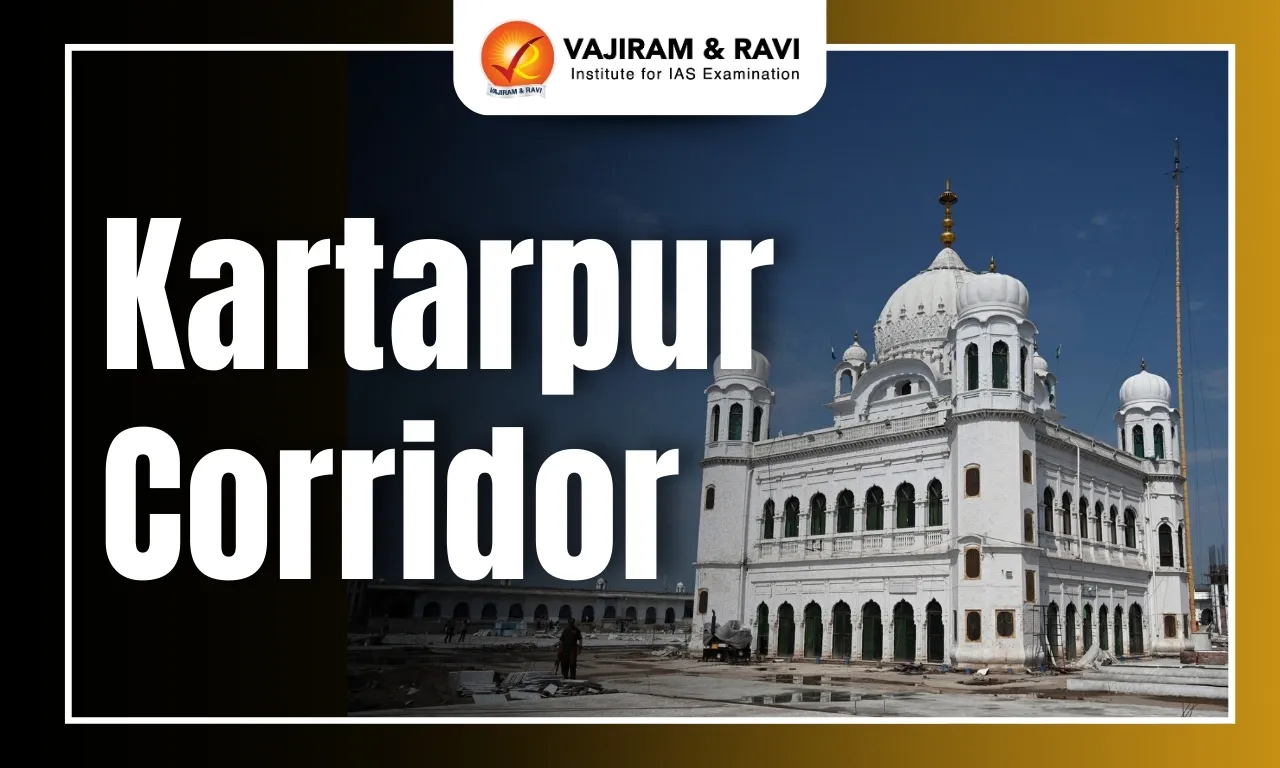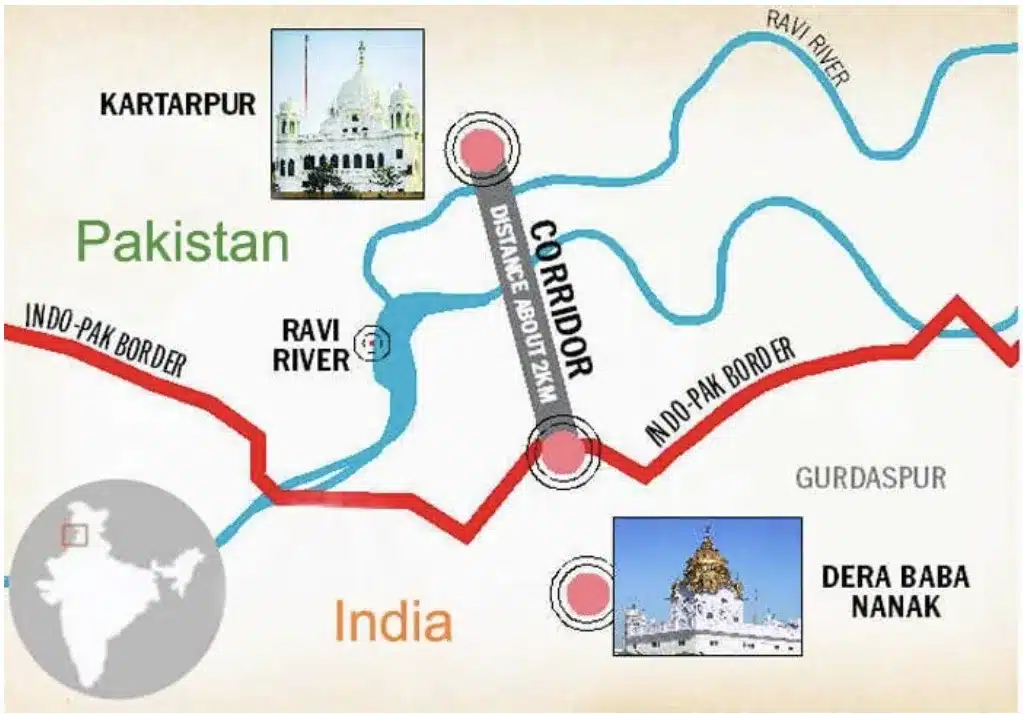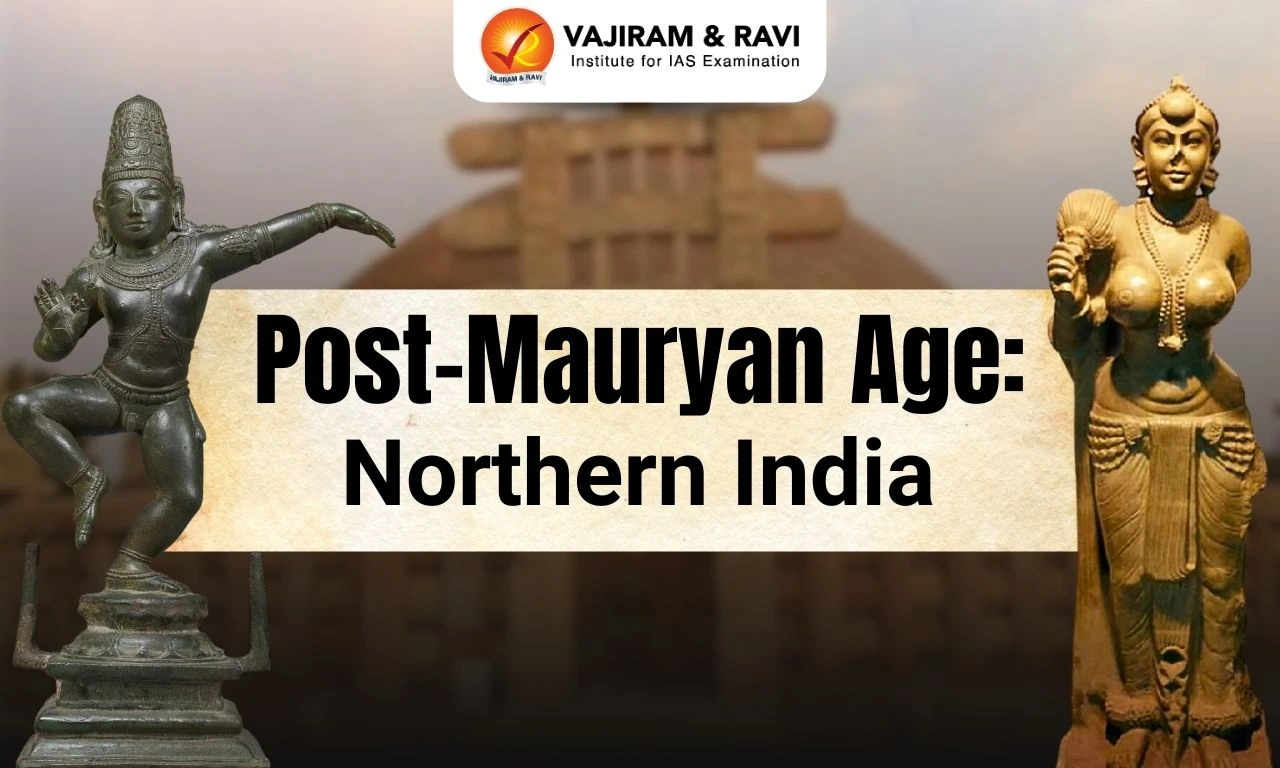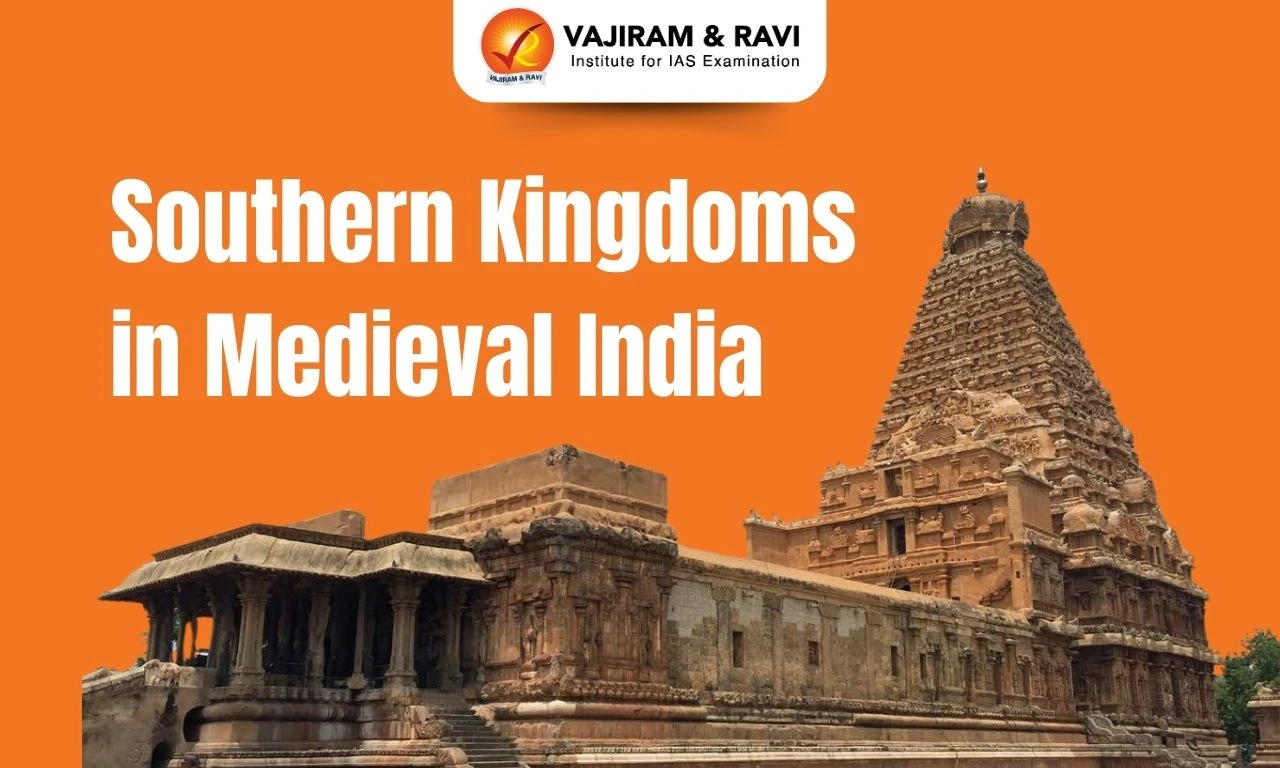Kartarpur Corridor is a visa-free border crossing that connects Gurdwara Darbar Sahib in Pakistan with Dera Baba Nanak in India. Kartarpur Corridor was inaugurated on the 550th birth anniversary celebration of Guru Nanak Dev in 2019. It is situated on the west bank of the Ravi River and holds immense religious significance for Sikhs all across the world.
Kartarpur Corridor helps in promoting religious tourism and fosters people-to-people ties. The Kartarpur Corridor agreement, initially valid till 2024, has been further renewed by India and Pakistan to ensure visa-free access to pilgrims till 2029.
About Kartarpur Corridor
Kartarpur Corridor is a visa-free border crossing that links the Dera Baba Nanak in India with Pakistan's Gurdwara Darbar Sahib. The corridor was built to allow Indian devotees to enter the Kartarpur Gurdwara, which is located on the Pakistani side of the border, approximately 4.7 kilometers from the India-Pakistan border, without a visa.
Kartarpur Corridor Map
Kartarpur Corridor Map shows the location of Kartarpur in Narowal, Pakistan, which is 4.7 km from Dera Baba Nanak in the Gurdaspur District of Punjab.
Kartarpur Corridor History
Kartarpur Corridor History dates back to 1504 when Guru Nanak, the first guru of Sikhism, founded Kartarpur. The various developments include the impact of partition, crisis due to Indo-Pak war and the revival of the Corridor, which are discussed in detail below:
- Gurdwara Kartarpur Sahib: The Gurdwara Kartarpur Sahib was established by Guru Nanak Dev, the first Sikh Guru, in 1522 and is believed to be the place where he passed away.
- Dera Baba Nanak Gurdwara: In an effort to commemorate Guru Nanak, Dera Baba Nanak Gurdwara was established here on the east bank of the Ravi River.
- Aftermath of Partition: In 1947, when the partition of India happened, Kartarpur went to Pakistan’s side.
- Indo-Pak War, 1965: Indian Sikhs were able to travel to Kartarpur informally for some years following the partition by crossing the Jassar Bridge, but later in the 1965 Indo-Pak War, Pakistani forces destroyed the bridge.
- Revival of Corridor: The pilgrims for decades only saw the Gurdwara from Dera Baba Nanak, Gurdaspur District in India using binoculars. But in 1999 talks for revival started between India and Pakistan as part of Delhi-Lahore Bus Diplomacy.
Kartarpur Corridor Agreement
Kartarpur Corridor Agreement was signed by India and Pakistan in 2019 to facilitate Indian pilgrims to travel to Pakistan to visit Gurdwara Darbar Sahib. The details of the agreement are discussed below:
- Visa-Free Access: The agreement allows Indian pilgrims and Overseas Citizens of India (OCI) cardholders to visit the Kartarpur Sahib Gurudwara in Pakistan without a visa.
- However, Pakistani Sikhs do not have access to this corridor and cannot visit Dera Baba Nanak in India without first obtaining an Indian visa.
- Visitors Allowed: Approximately 5,000 people of any faith can visit the holy shrine daily via the Kartarpur Sahib Corridor. However, pilgrims have to return on the same day.
- Valid Passport: The agreement requires that pilgrims must possess a valid passport for travel.
- Group Travel: Pilgrims can choose to visit individually or in groups, and they can also travel by foot.
Kartarpur Corridor Status
Kartarpur Corridor is an example of successful dialogue and diplomacy between India and Pakistan, which resulted in improved cultural and people-to-people relations. The status of Kartarpur Corridor is discussed below:
- Foundation Stone Laying: In 2018, both India and Pakistan laid the foundation stone for the corridor.
- Completion of Corridor: The corridor was completed and opened for pilgrims in 2019 to celebrate the 550th birth anniversary of Guru Nanak.
- Impact of COVID-19: The corridor remained shut for more than 20 months and was opened in 2021.
- Huge Pilgrimage: During 2021–2023, more than 1.92 lakh Indian pilgrims traveled to Pakistan to visit Gurdwara Darbar Sahib.
Kartarpur Corridor Significance
Kartarpur Corridor holds immense significance due to various factors, which include the religious importance of Kartarpur and visa-free access, which fosters goodwill and enhances local tourism. The details are discussed below:
- Religious Importance: The Kartarpur Corridor is religiously significant for Sikhs worldwide and in India because it is where Guru Nanak spent the last 18 years of his life.
- Guru Nanak first practiced the three pillars of Sikhism at Kartarpur: Kirat Karo (hard work and honest living), Vand Chhako (sharing wealth and talents), and Naam Japo (meditation).
- Fostering Peace and Goodwill: Kartarpur Corridor allows Sikh pilgrims from India to visit the shrine without a visa.
- Boosted Tourism: The Kartarpur Corridor has improved tourism on both sides of the border and boosted the local economy.
- Public Welfare: Although both sides have had hostile relations, the Kartarpur Corridor Project shows India and Pakistan can keep their differences aside for the broader public interest.
Kartarpur Corridor Challenges
Kartarpur Corridor faces several challenges due to logistical issues, poor site management, flooding, and the activity of Khalistani Separatists in the region. The challenges are discussed in detail below:
- Pakistan's "hidden agenda": Kartarpur Corridor poses concerns about misuse of the corridor by Pakistan to revive the Khalistan Movement.
- Logistical Issues: The logistical issues, such as the mandatory passport and $20 fee for pilgrims, have resulted in fewer pilgrims than the target.
- Management of Gurdwara: Sikh Communities from across the world have raised concerns over the improper management of Gurdwara in Kartarpur.
- Flooding Problem: The Kartarpur Corridor area is a flood-prone zone and the journey through the corridor becomes difficult when the water level in the Ravi River rises.
Kartarpur Corridor Way Forward
Kartarpur Corridor has been a significant step in improving the India-Pakistan ties and Prime Minister Narendra Modi equated the opening of the Kartarpur corridor with the fall of the Berlin Wall, arguing that both countries cooperated. This corridor has shown that public interest can lead to cooperation among nations.
- In this regard, UN Secretary-General António Guterres dubbed Kartarpur as a “corridor of hope” and went on to say: “When we see so many parts of the world fighting in the name of religion, it’s necessary to say that religions unite us for peace and the best symbol is this shrine”.
Kartarpur Corridor UPSC PYQs
Q.1 Terrorist activities and mutual distrust have clouded India-Pakistan relations. To what extent the use of soft power like sports and cultural exchanges could help generate goodwill between the two countries? Discuss with suitable examples. (UPSC Mains 2015)
Q.2 Consider the following bhakti saints. (UPSC Prelims 2013)
1. Dadu Dayal
2. Guru Nanak
3. Tyagaraja
Who among the above was/were preaching when the Lodhi dynasty fell and Babur took over?
(a) 1 and 3
(b) 2 and 3
(c) Only 2
(d) 1, 2 and 3
Ans. (b)
Last updated on December, 2025
→ Check out the latest UPSC Syllabus 2026 here.
→ Join Vajiram & Ravi’s Interview Guidance Programme for expert help to crack your final UPSC stage.
→ UPSC Mains Result 2025 is now out.
→ UPSC Notification 2026 is scheduled to be released on January 14, 2026.
→ UPSC Calendar 2026 is released on 15th May, 2025.
→ The UPSC Vacancy 2025 were released 1129, out of which 979 were for UPSC CSE and remaining 150 are for UPSC IFoS.
→ UPSC Prelims 2026 will be conducted on 24th May, 2026 & UPSC Mains 2026 will be conducted on 21st August 2026.
→ The UPSC Selection Process is of 3 stages-Prelims, Mains and Interview.
→ UPSC Result 2024 is released with latest UPSC Marksheet 2024. Check Now!
→ UPSC Prelims Result 2025 is out now for the CSE held on 25 May 2025.
→ UPSC Toppers List 2024 is released now. Shakti Dubey is UPSC AIR 1 2024 Topper.
→ UPSC Prelims Question Paper 2025 and Unofficial Prelims Answer Key 2025 are available now.
→ UPSC Mains Question Paper 2025 is out for Essay, GS 1, 2, 3 & GS 4.
→ UPSC Mains Indian Language Question Paper 2025 is now out.
→ UPSC Mains Optional Question Paper 2025 is now out.
→ Also check Best IAS Coaching in Delhi
Kartarpur Corridor FAQs
Q1. What is the purpose of Kartarpur Corridor?+
Q2. What is the significance of Kartarpur Corridor?+
Q3. On which river is Kartarpur Corridor?+
Q4. What is the Kartarpur Corridor Agreement?+
Q5. Who founded Kartarpur?+
Tags: kartarpur corridor quest UPSC International Relations and Institutions Notes


















